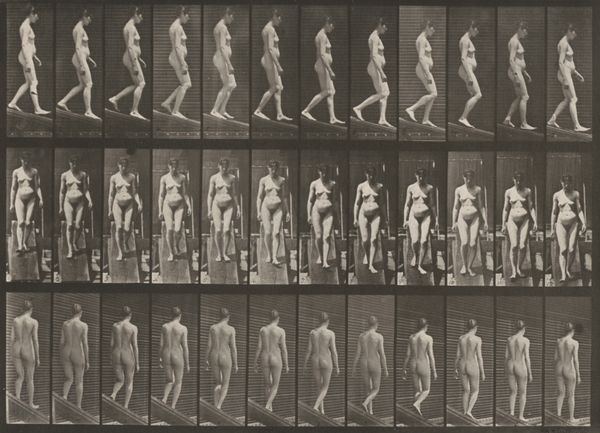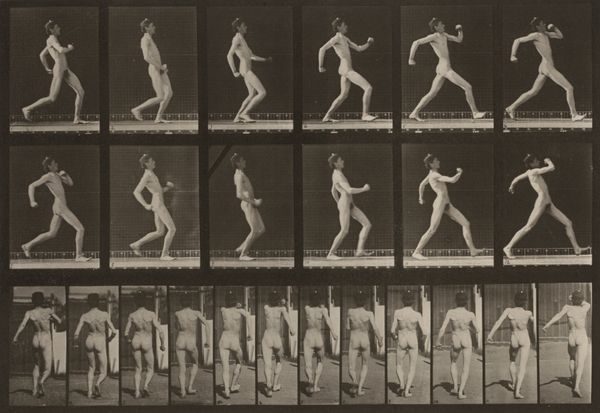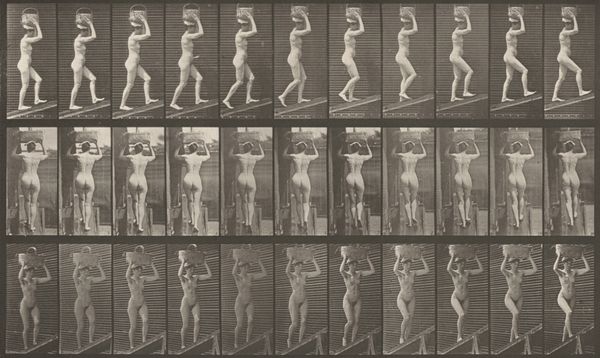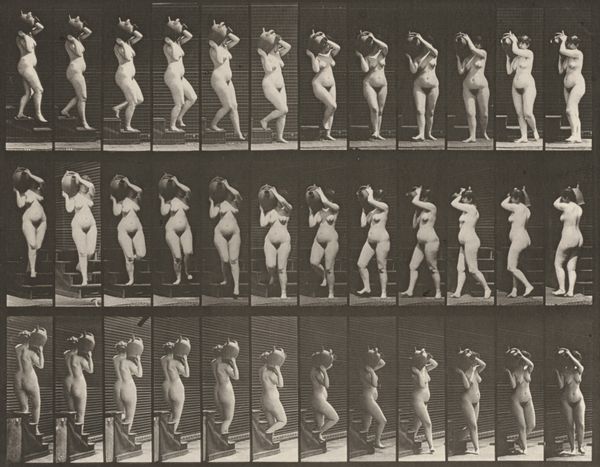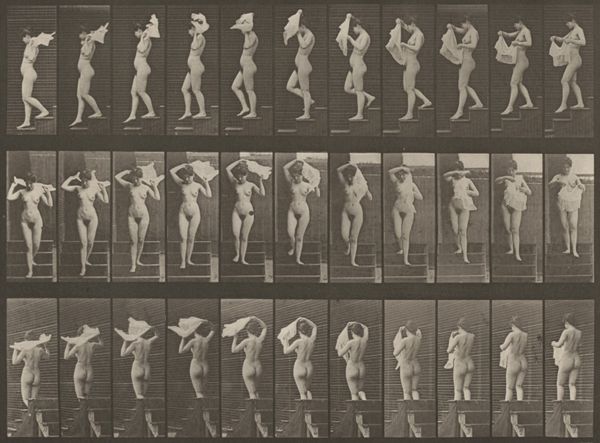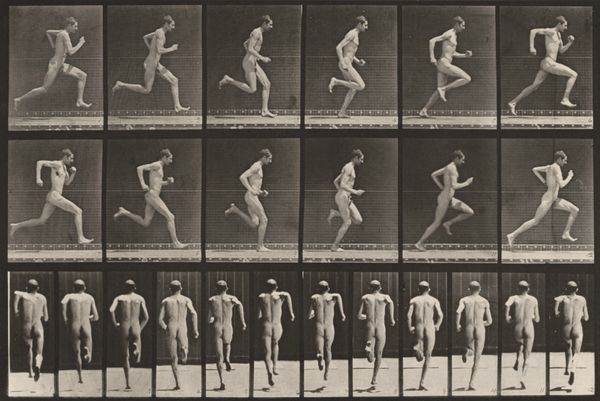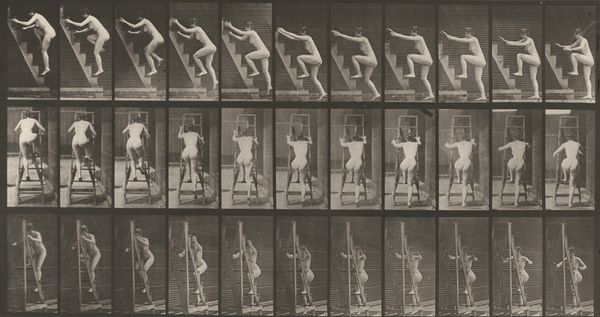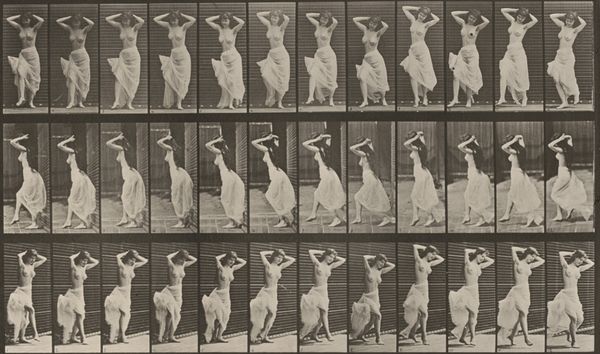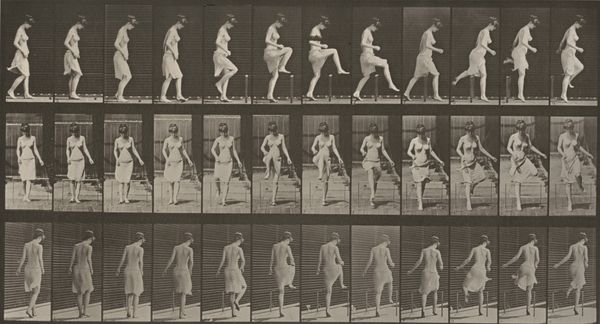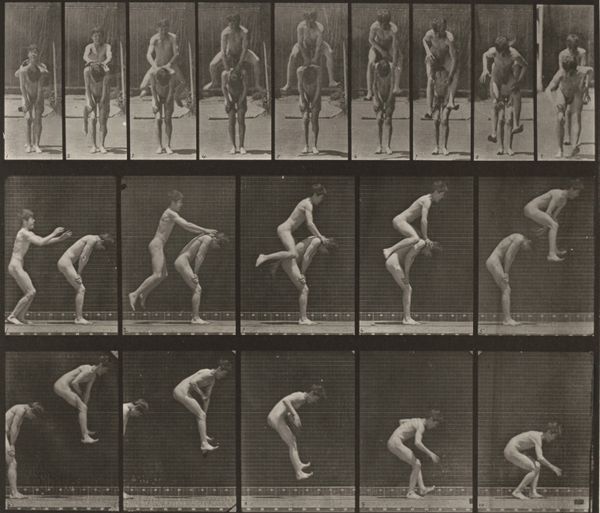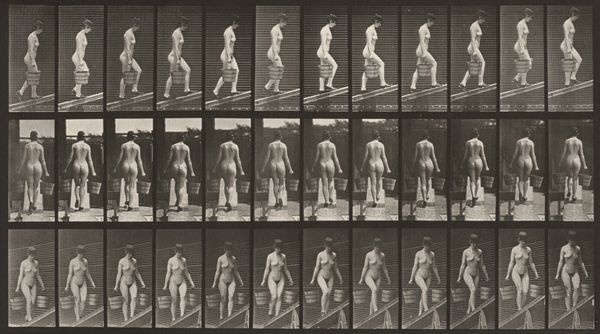
print, photography
# print
#
figuration
#
photography
#
nude
Dimensions: image: 25.5 × 29.1 cm (10 1/16 × 11 7/16 in.) sheet: 47.8 × 60.3 cm (18 13/16 × 23 3/4 in.)
Copyright: National Gallery of Art: CC0 1.0
Curator: Plate Number 185, Hopping on left foot, an 1887 print by Eadweard Muybridge. Immediately, I see a sort of rhythmic quality. The figure appears in a sequence of frames, capturing this single motion. Editor: Rhythm is a good word for it! It's also quite striking how the nude figure in motion is displayed against what seems like a measured grid. There’s a powerful tension in the image itself. Curator: That grid, crucial for scientific exactitude, also introduces an interesting power dynamic. Muybridge, commissioned by institutions like the University of Pennsylvania, was part of a late 19th-century drive to categorize and understand the human body. These motion studies directly informed medical and artistic fields. Editor: Absolutely, the grid emphasizes that objective study, yet framing creates this beautiful abstract pattern through line, tone, and contrast, which has an unexpected aesthetic appeal. Look at the way the light catches the muscles, defining them against the neutral backdrop. It gives form to motion in such an innovative way! Curator: The nudity, too, played a specific role, allowing unobstructed observation of muscular and skeletal actions. These weren’t necessarily considered artistic displays initially but became so as artists saw how they revealed the body’s mechanics and capabilities. However, we must acknowledge that such representations contribute to broader debates about controlling bodies, particularly female bodies. Editor: You're right. The lack of contextual cues does make it hard to get away from thinking about what is in the foreground. The play of light and shadow certainly emphasizes shape and form, the serial representation giving rise to different qualities and effects. It prompts viewers to visually synthesize movement, much before moving images became the norm. Curator: It's also important to remember Muybridge’s later work and lectures; he was performing, displaying these sequences. The societal context shaped how they were presented, understood, and ultimately influenced the art world and how we depict and study motion today. Editor: Looking at Muybridge, from a formalist perspective we see a breakthrough approach to capturing motion while observing how this representation shapes aesthetic choices and emotional responses.
Comments
No comments
Be the first to comment and join the conversation on the ultimate creative platform.
